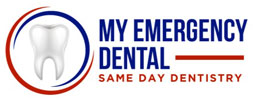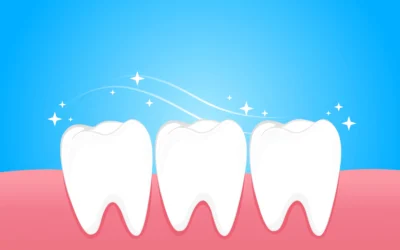If you’ve ever been to a dentist, chances are they X-rayed your teeth. But have you ever wondered how biting on a card until the machine beeps create a picture of your teeth or what your dentist is looking for in those X-rays? In this article, we’ll cover how the X-ray works, what the dentist is looking for, and how this technology benefits you and your family.
What is an X-ray?
X-rays are a type of electromagnetic radiation used to take pictures of your teeth and jaw. The word radiation may sound a little scary. However, we are constantly exposed to low levels of radiation from sunlight, the soil, and everything in between.
While high radiation levels can cause health problems, no study shows small doses of radiation are harmful. And the benefits far outweigh the risks.
How Does an X-ray Work?
The dentist or dental assistant will have you bite down around a card holding X-ray film. The X-ray “camera” emits low levels of X-rays. When these rays hit the film in your mouth, it turns the film gray.
X-rays pass easily through soft tissue, allowing more energy to hit the film. Thus, soft tissues appear dark. Bone absorbs the X-rays preventing them from reaching the film and leaving the film white in those areas.
The combination of light and dark areas on the film combine to create an accurate image of your teeth that your dentist can examine.
What is the Dentist Looking For?
A visual examination of your teeth only tells your dentist so much. An X-ray can help the dentist see below the surface, between teeth, and under crowns and fillings.
At every stage of our lives, our jaws and teeth change. Spotting problems as they develop makes them easier to treat. Here are some of the things a dentist looks for during an examination:
- Are teeth developing properly in young children?
- Will there be enough room for all teeth to emerge as the child grows? It is common for wisdom teeth to get stuck behind the back molars, or they might crowd their way in, making your smile crooked. The X-ray lets you address the problem before it causes damage.
- Is the jaw bone healthy? Over time people can lose bone density due to gum disease, osteoporosis, certain medicines, or chemical exposures. Bone loss in the jaw can make teeth become loose, shift out of position, or fall out. It can even cause your jaw to collapse, distorting your features. There are treatments for weakening bone, but they are most effective when bone loss is discovered early.
- Is there tooth decay? Tooth enamel is sturdy and hard but not infallible. Acids in your food, from your stomach, and other factors can erode the hard outer layer, allowing bacteria into the heart of the tooth. As it eats the tooth, creating voids or cavities, it will enable radiation to pass through to the X-ray film faster than solid, healthy teeth. Dentists can see decay inside the tooth, between teeth, under crowns and fillings, or the gumline much better by X-ray than they can in a visual inspection.
- Is there an abscess? Sometimes tooth decay progresses to the root of the tooth or into the jaw bone. An abscess, or infection that travels into the gums and bone can become a critical health hazard if the diseased tissue goes untreated, spreading poisons into the bloodstream. Emergency dental practitioners use the X-ray to determine the damage’s extent and ensure they get all of the infection out so it can’t spread.
- How bad is the trauma? After a car accident or other traumatic facial injury, an X-ray can show the extent of the damage and guide the emergency dentist or surgeon as they make repairs. It will also help them gauge how well everything healed and if they can remove any hardware used to hold the broken bone in place.
- What is the best cosmetic dentistry treatment plan? Whether you’re getting braces, bridges, dentures, or other work done to replace your teeth, an X-ray will guide them in making those tools more effective, comfortable, and longer lasting.
- Need a wellness check? X-rays can detect bone abnormalities, cysts, and tumors early before they become a problem.
Does Insurance Cover X-rays?
Many insurance plans will cover one or two sets of X-rays annually for each family member. Finding problems early means they are less costly to repair, so it makes sense that dental plans provide preventative dental care services.
However, it is good to review your policy regularly to know what is covered, whether there’s a deductible, and how often each procedure can be done per calendar year before you pay out of pocket.
An X-ray is an effective tool that allows dentists to diagnose and treat illness, injury, or decay before they can negatively impact your health or distort your smile. Having them performed regularly and evaluated by a dental professional can be a powerful tool for catching and treating problems early.



